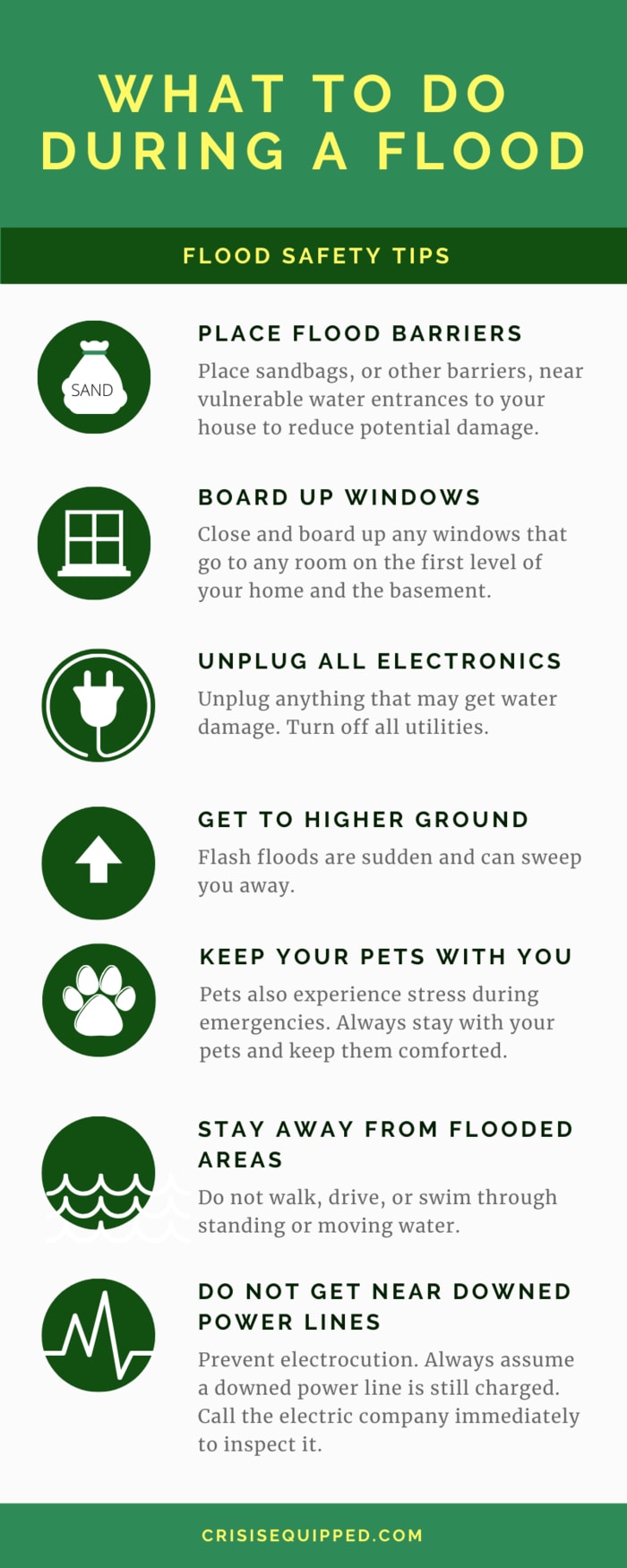Staying Safe With Flood Alerts: A Practical Guide

Table of Contents
Understanding Flood Alerts and Warning Systems
Effective flood preparedness begins with understanding the different types of alerts and their sources. Several agencies and services issue flood alerts, each indicating a different level of urgency.
- Flood Watch: Conditions are favorable for flooding. Stay informed and be prepared to take action.
- Flood Warning: Flooding is occurring or is imminent. Take immediate action to protect yourself and your property.
- Flood Advisory: Flooding is possible in certain areas. Be aware of potential hazards and monitor conditions.
Key sources for flood warnings and other alerts include:
- The National Weather Service (NWS): The primary source for weather-related alerts in many countries.
- Local Emergency Services: Your city or county emergency management agency will issue localized alerts.
- Weather Apps: Numerous mobile apps provide real-time weather information and flood safety alerts, including push notifications.
To ensure you receive timely alerts, consider these steps:
- Sign up for alerts: Most emergency services offer registration for email, text, and mobile app notifications. The NWS also offers various alert subscription options.
- Multiple alert sources: Relying on multiple sources (e.g., NWS website, local news, weather app) provides redundancy and minimizes the risk of missing crucial information. This approach to flood alerts provides comprehensive coverage.
- Understand urgency levels: Familiarize yourself with the different alert levels (watch, warning, advisory) to respond appropriately.
Creating a Flood Preparedness Plan
Proactive planning is essential for mitigating flood risks. A well-defined plan will help you respond effectively during a flood event.
- Identify flood risks: Assess your property's vulnerability to flooding. Are you located in a flood plain? What are the potential sources of flooding in your area (rivers, streams, heavy rainfall)?
- Develop an evacuation route and plan: Identify multiple escape routes and designate a meeting point for your family. Practice your evacuation plan regularly.
- Family communication plan: Establish a method for contacting family members during and after a flood. This could involve designated contact persons or a group chat.
Essential components of a flood preparedness plan include:
- Emergency kit: Stock a kit with essential supplies, including water (at least one gallon per person per day), non-perishable food, medications, first-aid supplies, flashlights, batteries, important documents (copies of identification, insurance policies), and any special needs items.
- Protecting valuables: Elevate valuable documents and belongings to higher ground. Consider waterproof containers for important papers.
- Insurance coverage: Ensure adequate flood insurance coverage. Standard homeowner's insurance usually does not cover flood damage.
Actions to Take During a Flood Warning
When a flood warning is issued, act quickly and decisively. Always follow official instructions from emergency services.
- Move valuables to higher ground: Relocate valuable items, furniture, and electronics to upper floors or other safe locations.
- Unplug electrical appliances: To prevent electrical shock, unplug appliances and disconnect power at the main breaker.
- Turn off gas and water: If instructed by authorities, turn off gas and water lines to prevent further damage.
- Evacuate: If ordered to evacuate by authorities, do so immediately. Do not attempt to drive through floodwaters.
- Safe routes: Know the safest routes to higher ground and evacuation centers beforehand.
Staying Safe After a Flood
Post-flood safety is crucial. Floodwaters can be contaminated and present various hazards.
- Avoid floodwaters: Floodwaters are often contaminated with sewage and other pollutants. Avoid contact whenever possible.
- Downed power lines: Stay away from downed power lines, which may be energized.
- Report damage: Report property damage and other safety concerns to local authorities.
- Insurance claim: Contact your insurance company to begin the claims process.
- Professional help: Seek professional help for cleaning and repairs, particularly if there is significant structural damage.
Utilizing Technology for Flood Safety
Technology plays a significant role in enhancing flood safety.
- Weather apps: Many weather apps (e.g., [mention relevant apps ethically and appropriately here, if applicable]) provide real-time alerts, forecasts, and radar imagery. Customize your settings to receive notifications for your specific location.
- Government websites: The NWS and local emergency management websites offer valuable information and alert systems.
Staying Safe with Flood Alerts – Your Key to Protection
This guide highlights the importance of proactive planning, understanding different types of flood alerts (including flood warnings), and taking appropriate action before, during, and after a flood event. Effectively utilizing flood alerts and emergency notification systems is crucial for protecting yourself and your loved ones. Create a flood preparedness plan today and sign up for flood safety alerts in your area. Staying informed can save lives and minimize property damage. Don't wait until it's too late – take action now and safeguard your future with effective flood preparedness.

Featured Posts
-
 Flood Alerts A Comprehensive Guide To Safety And Preparedness
May 25, 2025
Flood Alerts A Comprehensive Guide To Safety And Preparedness
May 25, 2025 -
 Sixth Century Sutton Hoo Vessel A Study Of Cremated Remains
May 25, 2025
Sixth Century Sutton Hoo Vessel A Study Of Cremated Remains
May 25, 2025 -
 Bangladesh And Europe Collaborative Growth Strategies
May 25, 2025
Bangladesh And Europe Collaborative Growth Strategies
May 25, 2025 -
 Charlene De Monaco Y El Arte De Llevar Lino En Otono
May 25, 2025
Charlene De Monaco Y El Arte De Llevar Lino En Otono
May 25, 2025 -
 Will Trumps Tactics Secure A Republican Deal
May 25, 2025
Will Trumps Tactics Secure A Republican Deal
May 25, 2025
Latest Posts
-
 Alleged Naomi Campbell Met Gala Ban Details Of The Anna Wintour Feud
May 25, 2025
Alleged Naomi Campbell Met Gala Ban Details Of The Anna Wintour Feud
May 25, 2025 -
 Naomi Campbell Banned From The Met Gala Due To Anna Wintour Conflict
May 25, 2025
Naomi Campbell Banned From The Met Gala Due To Anna Wintour Conflict
May 25, 2025 -
 Naomi Campbell Allegedly Excluded From Met Gala 2025 The Anna Wintour Connection
May 25, 2025
Naomi Campbell Allegedly Excluded From Met Gala 2025 The Anna Wintour Connection
May 25, 2025 -
 The Naomi Campbell Anna Wintour Rift Impact On Met Gala 2025
May 25, 2025
The Naomi Campbell Anna Wintour Rift Impact On Met Gala 2025
May 25, 2025 -
 Met Gala 2025 Will Naomi Campbell Be Absent Due To Anna Wintour Dispute
May 25, 2025
Met Gala 2025 Will Naomi Campbell Be Absent Due To Anna Wintour Dispute
May 25, 2025
